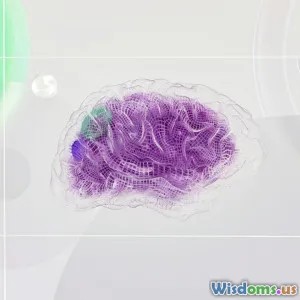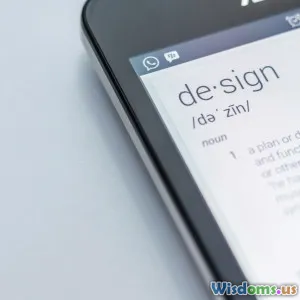
Creative Problem Solving in Graphic Design
5 min read Explore innovative strategies for problem solving in graphic design, enhancing creativity and design effectiveness. (0 Reviews)
Creative Problem Solving in Graphic Design
Graphic design isn't just about aesthetics; it’s also about solving problems creatively. Designers are often faced with challenges that require innovative solutions, and how they approach these challenges can significantly impact the effectiveness of their designs. In this article, we will explore various strategies and techniques for creative problem solving in graphic design, providing you with practical insights to enhance your design process.
Understanding Creative Problem Solving
Creative problem solving (CPS) is a method used to approach a problem in a structured way, encouraging innovative thinking and exploring multiple perspectives. In graphic design, CPS is vital because it helps designers navigate the complexities of client expectations, target audience needs, and project constraints.
The CPS Process
- Identify the Problem: Start by clearly defining the problem. What are you trying to solve? Is it a design that doesn’t resonate with the target audience? Or perhaps a branding challenge?
- Gather Information: Research the context of the problem. Who is your audience? What are their preferences? Understanding the background can provide valuable insights.
- Generate Ideas: Use brainstorming techniques to generate a wide range of ideas. Don’t filter your thoughts too early; allow creativity to flow.
- Evaluate and Refine: Review your ideas critically. Which ones are practical and feasible? Narrow down your options and refine them.
- Implement Solutions: Choose the best solution and begin the design process. Be open to feedback and ready to iterate as needed.
Techniques for Enhancing Creativity in Design
1. Mind Mapping
Mind mapping is a visual brainstorming tool that helps in organizing thoughts and ideas. Start with a central idea and branch out with related concepts. This technique encourages non-linear thinking and can lead to unexpected solutions.
2. Design Thinking
Design thinking is a user-centered approach that focuses on understanding the needs of the end-user. This method involves empathy, ideation, and prototyping, allowing designers to create solutions that truly resonate with their audience.
3. Collaboration
Collaborating with others can spark creativity. Engaging with team members from different backgrounds or disciplines can provide fresh perspectives and ideas that you might not have considered.
4. Constraints as a Catalyst
Embracing constraints can actually enhance creativity. Limitations force you to think outside the box and find innovative solutions that you might not have explored with unlimited resources.
Real-World Examples
Case Study: Nike's “Just Do It” Campaign
Nike's iconic “Just Do It” campaign is a prime example of creative problem solving. Faced with declining sales in the 1980s, the company needed a way to resonate with a broader audience. The campaign’s simplicity and motivational message not only addressed the sales problem but also connected deeply with consumers, reinforcing Nike's brand identity.
Case Study: Airbnb's Visual Identity
Airbnb faced the challenge of distinguishing itself in a crowded market. By adopting a unique visual identity that tells a story of belonging, Airbnb successfully solved its branding problem. Their use of design elements that reflect community and connection has made their brand instantly recognizable.
Conclusion
Creative problem solving is an essential skill for graphic designers. By employing structured approaches and techniques, designers can navigate challenges with confidence and creativity. Remember, the key to successful design lies not just in the final product but in the innovative journey taken to get there. Embrace creativity, collaborate, and don’t shy away from challenges—each problem is an opportunity for extraordinary design.
Rate the Post
User Reviews
Popular Posts




















